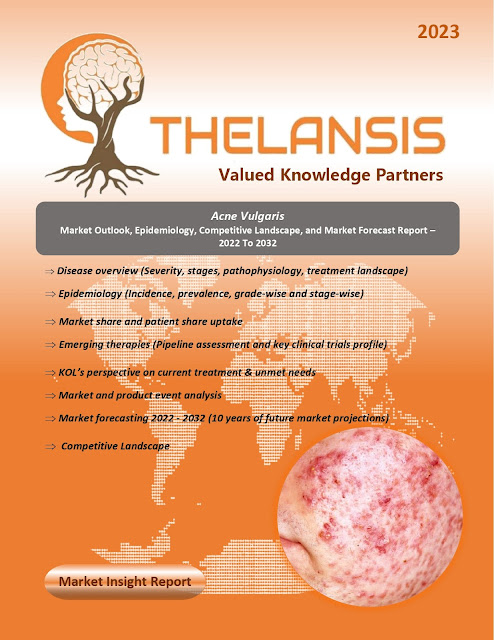Systemic Amyloidosis – Market Outlook, Epidemiology, Competitive Landscape, and Market Forecast Report – 2023 To 2033
Systemic amyloidosis (SA) encompasses a group of rare disorders characterized by the deposition of misfolded protein aggregates as insoluble fibrils within tissues, resulting in progressive organ dysfunction, disability, and potentially fatal outcomes. Fourteen proteins have been identified as potential etiological agents of SA, with precise identification crucial for targeted therapy specific to each disease subtype. The second most prevalent subtype is transthyretin amyloid protein (ATTR) amyloidosis, which includes both variant ATTR (ATTRv) and wild-type ATTR (ATTRwt). Other less common subtypes include serum amyloid A (AA) amyloidosis, whose incidence is declining due to improved treatment of underlying chronic inflammatory conditions and other hereditary and acquired forms. SA predominantly affects the heart, kidneys, and peripheral and autonomic nervous systems but can also involve other organs, leading to a broad spectrum of clinical syndromes. The nonspecific nature of its manifestations often complicates the diagnostic process, resulting in prolonged patient journeys marked by numerous medical consultations, examinations, misdiagnoses, and delayed definitive diagnosis. Despite advancements in the diagnosis and treatment of amyloidosis, it remains a condition associated with significant morbidity and high early mortality rates, particularly in patients with cardiac involvement. Early disease recognition and timely intervention are critical to prevent further organ damage. Systemic amyloidosis is classified based on the chemical composition of the misfolded protein. The amyloid comprises two components:
- A constant unit, most commonly the amyloid P component
- A variable unit, such as
- Immunoglobulin light chain (producing 'AL' amyloid)
- Transthyretin (producing ATTR amyloid)
- Beta-2 microglobulin (Aβ2M) leads to systemic amyloidosis in chronic dialysis
Cutaneous manifestations vary depending on the site of amyloid deposition and the degree of local tissue destruction, occurring in 30–40% of patients with primary systemic AL amyloidosis. Complications are variable and depend on the site and extent of involvement:
- Skin, hair, and nail involvement can lead to disfigurement and psychological distress
- Macroglossia can cause chewing and swallowing difficulties
- Organ failure and death, particularly due to renal failure, nephrotic syndrome, and cardiomyopathy
Conventional high-dose plasma cell-directed chemotherapy with melphalan and dexamethasone, sometimes followed by autologous stem cell transplant in those well enough to tolerate it, is a common treatment approach.
Thelansis’s “Systemic Amyloidosis Market Outlook, Epidemiology, Competitive Landscape, and Market Forecast Report – 2023 To 2033" covers disease overview, epidemiology, drug utilization, prescription share analysis, competitive landscape, clinical practice, regulatory landscape, patient share, market uptake, market forecast, and key market insights under the potential Systemic Amyloidosis treatment modalities options for eight major markets (USA, Germany, France, Italy, Spain, UK, Japan, and China).
KOLs insights of Systemic Amyloidosis across 8 MM market from the centre of Excellence/ Public/ Private hospitals participated in the study. Insights around current treatment landscape, epidemiology, clinical characteristics, future treatment paradigm, and Unmet needs.
Systemic Amyloidosis Market Forecast Patient Based Forecast Model (MS. Excel Based Automated Dashboard), which Data Inputs with sourcing, Market Event, and Product Event, Country specific Forecast Model, Market uptake and patient share uptake, Attribute Analysis, Analog Analysis, Disease burden, and pricing scenario, Summary, and Insights.
Thelansis Competitive Intelligence (CI) practice has been established based on a deep understanding of the pharma/biotech business environment to provide an optimized support system to all levels of the decision-making process. It enables business leaders in forward-thinking and proactive decision-making. Thelansis supports scientific and commercial teams in seamless CI support by creating an AI/ ML-based technology-driven platform that manages the data flow from primary and secondary sources.



%20Market%20Outlook%20and%20Forecast.webp)
Comments
Post a Comment